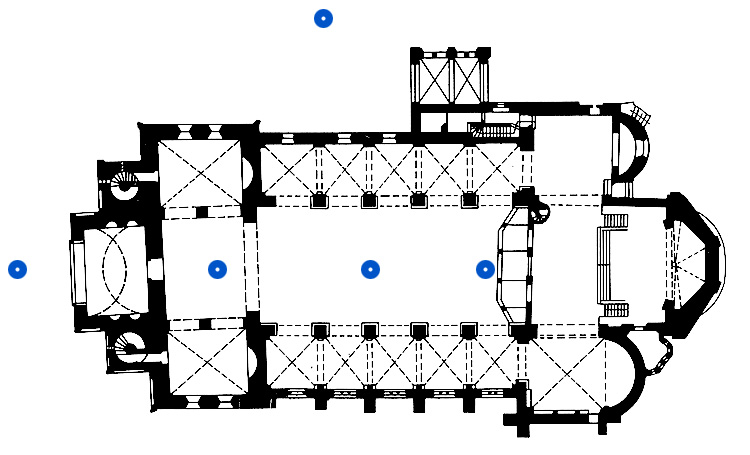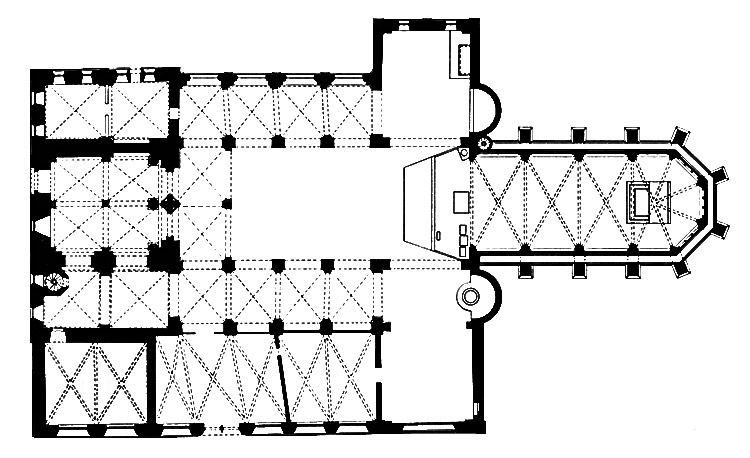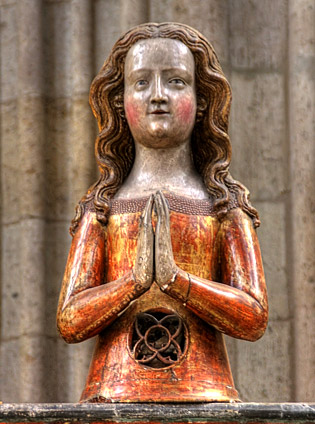St. Pantaleon Church
ca. 966-980 and ca. 1180-1216, Cologne, Germany

A church dedicated to the Greek saint and physician Pantaleon (Panteleimon) is first mentioned in Cologne in 866, but it may not have been until the middle of the tenth century that relics of St. Pantaleon actually arrived in Cologne and were deposited in the church. Following a 10th-century translation of the saint's relics from Rome, Archbishop Bruno of Cologne, a brother of Emperor Otto the Great, rebuilt the earlier church from the ground and founded a Benedictine monastery on the site.
During the construction of the new church, the discovery of the tomb and body of the abbot and martyr St. Maurinus led to the establishment of a second important cult at the monastery, and a third one took root shortly thereafter, when the relics of St. Albinus (Albanus) arrived from Rome in the 980s. Empress Theophanu, the Byzantine wife of Emperor Otto II, further endowed the church and monastery of St. Pantaleon and—like Archbishop Bruno—was buried there in 991.
Imperial donations and endowments secured the future of the church and monastery. Extensively rebuilt during the second half of the 12th and into the early 13th century, the church still houses—flanking the entrance to the sanctuary on either side—two splendid shrines made to contain the relics of Sts. Maurinus and Albinus around 1170 and 1186 respectively. Despite later additions and restorations, these large reliquary shrines testify to Cologne and the Rhineland's status as an important center of fine metalworking and reliquary production in Romanesque Germany.
Church of St. Ursula
ca. 1106-35 and late 13th century, Cologne, Germany


Bust of St. Ursula
The church of St. Ursula has a long history that goes back to the Early Christian period. According to a Late Roman inscription, found on site, it was a Roman senator named Clematius, who, encouraged by divine visions, came to Cologne from the East Roman Empire to rebuilt a church that commemorated the burial site of a group of Christian virgins who had died for their faith and were subsequently interred there. Little is known about the (late fourth-century?) basilica founded by Clematius, but when the inscription was re-discovered in the early 9th century, legends started to embellish the story and spread the fame of the saintly virgins—allegedly eleven thousand in number—martyred and buried on the site.
Among the holy virgins known by name—likely as a result of the discovery of Late Roman epitaphs—a certain Ursula, identified as the daughter of the king of Britain, eventually emerged as the leader of the group and became the focus of a flourishing cult. The discovery of more and more bones on the 'ager Ursulanus' during the following centuries secured the financial well-being of the female convent that had been established there around 922, and led to the rebuilding of the earlier church in the second quarter of the 12th century. Other structures, including a new Gothic sanctuary were added during the 13th century.
The so-called Golden Chamber of St. Ursula still displays the church's many relics in an impressive display of holy bones and precious skulls all around its walls. While some of the skulls are housed in carved, Late Medieval or Baroque reliquary busts, others are stored on shelves, covered with richly embroidered fabric.
Exhibition Objects Associated with Cologne
- Reliquary Bust of an Unknown Female Saint, Probably a Companion of St. Ursula
- Reliquary Triptych from St. Maria ad Gradus




